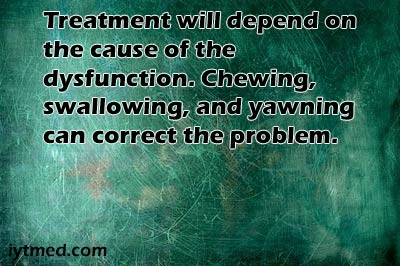Experiencing pressure in the ear is a common occurrence that can range from mildly uncomfortable to severely painful. It can feel like a blockage, muffled sounds, or even a fullness in the ear. Understanding the underlying causes, treatment options, and when to seek professional help can make a significant difference in managing ear pressure. This article delves into the common causes of ear pressure, practical remedies, and the latest trends in treatment.
Common Causes of Ear Pressure
Common Causes of Ear Pressure
Ear pressure can be caused by a variety of factors, some more benign than others. Below, we outline the most common reasons people experience this condition:
| Cause | Description |
|---|---|
| Eustachian Tube Dysfunction | Blockage or improper function of the Eustachian tube, leading to an imbalance of pressure between the middle ear and the environment. |
| Ear Infections | Inflammation due to bacteria or viruses can lead to fluid buildup, causing pressure. Approximately 50% of children under age 5 experience ear infections at least once. |
| Altitude Changes | Rapid elevation changes, such as during a flight or driving in mountainous areas, can lead to temporary pressure imbalance. |
| Sinus Congestion | Inflammation or congestion in the sinuses can create pressure that transfers to the ears. |
| Earwax Buildup | Excess earwax can block the ear canal and create a sensation of pressure. |
Eustachian Tube Dysfunction: A Closer Look
The Eustachian tube is a small passageway that connects the middle ear to the back of the throat, helping regulate pressure and draining fluids. When this tube fails to open and close properly, pressure imbalances occur, leading to discomfort. Research shows that nearly 70% of individuals with Eustachian tube dysfunction report issues during altitude changes, such as on airplanes or in high-rise elevators.
- Symptoms: Feeling of fullness, reduced hearing, popping sensations.
- Remedies: Yawning, chewing gum, or swallowing can help open the Eustachian tube and equalize pressure.
A popular over-the-counter remedy for Eustachian tube issues is nasal decongestant spray, which typically costs between $8 and $15. This spray works by reducing inflammation around the Eustachian tube, allowing for easier pressure regulation.
Ear Infections: Children and Adults
Ear infections are a prevalent cause of ear pressure, particularly among children. The anatomy of a child’s Eustachian tube makes them more susceptible to infections and subsequent pressure buildup. Adults, although less frequently affected, can also suffer from ear infections, especially following a cold or respiratory infection.
- Treatment: Antibiotics may be prescribed for bacterial infections, but they are often unnecessary for viral cases. Doctors recommend waiting 48-72 hours before seeking antibiotics unless symptoms worsen.
The average cost of a consultation for ear infections can range from $50 to $150, depending on location and healthcare provider.
Altitude Changes: How to Manage Ear Pressure
Changes in altitude are another significant cause of ear pressure. During a flight or mountain drive, the rapid change in air pressure can lead to an imbalance that the Eustachian tube struggles to equalize. This type of ear pressure is usually temporary and resolves itself as the body adjusts to the new elevation.
- Tips: Travelers are often advised to chew gum, suck on candy, or perform the Valsalva maneuver (gently blowing while holding the nose and keeping the mouth closed). These methods help to equalize the pressure and reduce discomfort.
| Scenario | Recommended Remedy |
|---|---|
| Flying | Chewing gum, swallowing, yawning |
| Mountain driving | Frequent swallowing, hydration |
| Diving underwater | Equalizing pressure slowly, ascending carefully |
Earwax Buildup: Safe Cleaning Tips
Earwax buildup can also lead to pressure and discomfort in the ears. While earwax serves as a protective barrier for the ear canal, an excessive amount can lead to a blocked sensation and even impact hearing.
- Do Not Use Cotton Swabs: Cotton swabs are one of the leading causes of impacted earwax, which can worsen pressure and discomfort.
- Safe Alternatives: Over-the-counter ear drops are effective in softening earwax, which then allows it to drain naturally. These drops typically cost between $5 and $10.
Earwax removal performed by a healthcare professional is a safe and effective option, usually costing between $50 and $100 per session, depending on the provider.
When to Seek Medical Attention
While ear pressure is often harmless and resolves on its own, there are cases where medical intervention is necessary. Chronic or severe pressure, especially when accompanied by pain, fever, or hearing loss, warrants a visit to an ear specialist. In rare cases, prolonged pressure may indicate a more severe condition, such as a middle ear tumor or severe Eustachian tube dysfunction.
Advice from Our Editorial Team
Dealing with ear pressure can be uncomfortable, but understanding the cause and implementing appropriate remedies can make a significant difference. Whether it’s the simple act of yawning during a flight or using over-the-counter ear drops for wax buildup, knowing how to manage ear pressure is empowering. However, if the symptoms persist or worsen, do not hesitate to consult a healthcare provider. Proactive attention to ear health can prevent complications and ensure that minor annoyances don’t become major health concerns.









